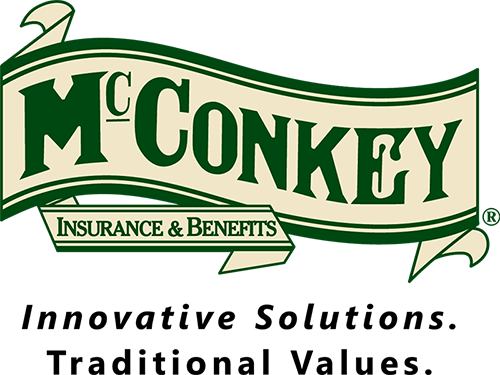
Looking Back at 2022
For construction companies, 2022 was a year where some things changed and others stayed the same. The COVID-19 pandemic was in the rearview for many companies, but labor shortages continued to present challenges for contractors. Backlogs were strong, for the most part, and there was plenty of work to bid. Due to significant inflation, much of the work was not as profitable and many jobs that were bid did not start because the project costs came in higher than many owners’ expected. As contractors finalize their budgets for 2023, many wonder what the insurance market will hold for next year. While we do not claim to predict the future, we do have an idea of what the insurance market will look like. Looking back on our thoughts on last year, we had most of it right. We accurately predicted that the umbrella market would be considerably more favorable than prior years where 30% was often the minimum increase carriers were looking for. Most business have recognized the need for, and benefit of, cyber insurance and coverage has been inexpensive over the last decade. The sharp increase in claims over the last few years led to significant increases in premiums, sometimes increasing by multiples when the business sustained a breach of some sort. As we expected, this was the coverage line that ultimately had the most significant increases. Lastly, we expected the property market to firm due to companies beginning to require minimum building value increases as inflation had a significant impact on building material costs. This resulted in higher than expected payouts on claims filed in 2022.
The Insurance Market for 2023
Enough about 2022, what can we expect looking forward to 2023? Inflation is the common trend that will impact almost all lines of insurance. Most underwriters will be looking for moderate rate increases with a few outliers, mainly Cyber, expecting double digit increases. The rate increases will be manageable for most contractors. The commentary below is a generalization of the market and contractors could see significantly different results based on their loss experience, class of business, and states that they perform work.
Workers’ Compensation
This line of coverage is frequently the costliest for contractors and fortunately has been the line of coverage that’s been the most stable over the last decade. After years of state rates decreasing, carriers are trying to hold the net rate flat by adjusting schedule credits or allowing experience mod increases to flow through. The ability for contractors to control the frequency of claims and having more effective return to work programs has helped stave off potential increases due to medical cost inflation. Subject to changes in the experience mod and overall loss experience, contractors should be seeing minimal increases in their workers’ comp rates for 2023 and some may see slight decreases.
Automobile
Claim payments have outpaced actuarial projections due to inflationary trends over the last few years. Trucks that were purchased for $20k in 2020 or 2021 often cost $25k or $30k to replace in the event of a total loss in 2022. Repairs are also more costly than initially expected. Carriers did not appropriately fund for the increase in physical damage claims, so they will need additional premium to cover the increased claim costs. Social and medical inflation has also impacted the cost of liability claims, but the market has adjusted over the last few years so overall increases for most clients should be in the 8%-12% range, but could be less for lighter fleets and those with exceptional loss experience.
General Liability
Similar to Automobile coverage, as the cost of injuries and the cost of repairs increase, insurance that pays for those items will also increase. General Liability claims for contractors often consist of damage to buildings or injuries to individuals. As building material costs increase by double digits and medical costs increase year after year, it’s not a surprise that general liability claim payouts continue to increase. Just as with automobile increases, renewals should be relatively manageable and most will be less than 10% and some increases under 5%. One additional exclusion that companies could begin to see with more regularity is related to PFAS (per- and polyfluoroalkyl). This is an exposure that should be covered under separate pollution policy if there is an exclusion on the general liability policy.
Umbrella/Excess Liability
Umbrella has been the most volatile line of coverage for many contractors over the last several years. Those whose umbrella is not part of a package, who have large fleets, who self-perform paving or bridge construction, operate in New York, and especially those who have had a claim hit the umbrella layer, have seen premiums double or triple since 2019. We began to see rate increases leveling off in 2022 and expect that to continue in 2023 as overall industry premiums are more likely to cover the catastrophic claims that have caused the hard market. While increases will likely be more than the primary auto and general liability, most contractors should see less than 20% rate increases and some will see single digits. This is a welcome change compared to years of significant double-digit increases. We are not seeing additional reduction in capacity, but individual clients may need to layer the first $5,000,000 in coverage if they have a significant fleet or perform work in New York. Inflation will cause an increase in the frequency of umbrella claims as claims that were close to the primary limit now cross over into the umbrella layer. While not as impactful as nuclear verdicts, this will increase the overall payout on the umbrella line and lead to a need for additional premium to cover those losses.
Property & Inland Marine
This is where inflation is going to have the biggest impact. Some carriers are mandating 10%+ value increases as the reconstruction cost of existing buildings has increased substantially over the last 2-3 years. In addition to value increases, some carriers are pushing rate increases close to 10% as property claim payouts have been higher than expected due to inflation and because of a continued tightening of the reinsurance market. Anyone with significant values in coastal areas could see significant changes to deductibles and rate increases in excess of 20%. Contractors who aren’t as exposed to catastrophic weather events and who haven’t had loss issues should see underwriters looking for rate increases in the 5%-10% range. However, a recent statistic indicated that 90% of counties in the United States have experienced a natural disaster in the last decade. The Contractor’s Equipment and Builders’ Risk/Installation Floater market continues to be favorable for clients without losses as rate increases have been under 5%. This may change during the course of the year as insurance carriers spread property rate increases to other lines of coverage. McConkey has been successful negotiating more favorable renewals by trading building values increases for flat rates or even rate decreases in some cases.
Pollution
The pollution market continues to be very stable for companies who have a clean loss history. The market has had many new entrants over the last decade and remains competitive. Increases for many clients will be around 5%, or less. The national attention that PFAS has been getting could lead to more conservative underwriting for contractor’s whose material contains PFAS, but we have not seen this impact the market yet. Exposure to mold is causing some scrutiny for those involved in significant frame projects, but there haven’t been widespread impacts to renewals at this point.
Professional Liability
Professional and Pollution Liability have followed a similar path over the last decade. New players have improved the availability and pricing of coverage for many construction companies. With project delays and increasing construction costs due to inflation, there has been a slight increase in professional liability claims. There has also been an increase in rectification claims as that coverage becomes more readily available. Rate increases should remain in the single digits, with few exceeding 10% unless there has been claim activity.
Executive Protection/Management Liability
Many privately held construction companies purchase Employment Practices Liability, Crime, and Fiduciary Liability. Subject to loss experience, renewal rate increases should be around 5% or less. Some Cyber related claims have hit crime policies and increased employee turnover typically leads to more Employment Practices claims, so carriers will be monitoring a potential downturn in the economy that could lead to layoffs. This could lead to steeper rate increases as we get closer to 2024.
Cyber
Cyber Liability continues to be the most challenging renewal for most businesses and construction is no exception. Requirements for MFA and EDR are now standard for almost all cyber carriers and it’s difficult to get coverage without having MFA implemented. Even those with the best controls and no prior claims saw increases of over 25%. For those with Cyber Renewals early in 2023, it’s expected that the increases will be 20%, or more. The rate decreases may slow down for those with renewals in the second half of 2023 as the market begins to level off after compounding rate increases in back to back years.
The expectations outlined above are a broad generalization and results may vary significantly based on loss experience, fleet makeup, and other individual characteristics of each company. Any safety or risk management improvements made during the year can also help with negotiations with underwriters. If additional cyber security measures or additional driver training or screening has been put in place then these investments in safety can help lead to more favorable renewals. We start discussions early with underwriters so our clients aren’t surprised by renewal increases at the last minute. Fortunately, there is capacity overall as carriers are competitive on new business and incumbents are eager to lock up renewals early for most lines of coverage.
At McConkey, we work closely with our clients to educate them on insurance industry updates in order to assist them in making important and informed business decisions regarding their insurance needs. As always, reach out to us at info@ekmcconkey.com for more information.



